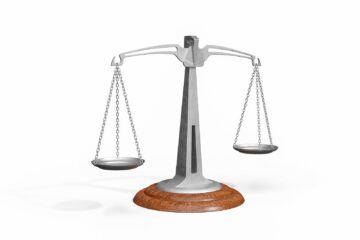![]()
Introduction:
The economic relationship between the center and the state is laid down in the Constitution. The Constitution provides for a comprehensive scheme of distribution of financial capital between Union and State. Economic powers are like it’s also split between the two sets of government. The types of income of the union government are listed in the Union List and the sum of those sources is income tax other than agricultural tax revenue, customs, and excise taxes. The Country: State, on the other hand, draws the key line Revenue from the sources listed in the Union list. Though State Legislatures impose a tax on an object, it’s listed in the state list.
The constitution of India provides for a division of the board between the right to collect a tax and the power to receive the revenues of the tax. Therefore, the legislature which levies a tax is not usually the entity that preserves the revenues of the tax levied. Generally, the Union Parliament levies a tax on the items listed in the Union list while the State legislature levies a tax on such items. The Constitution of India, being a federal constitution separates or distributes all powers (legislative, executive, and financial) between the central and the States. There is no separation of judicial authority, however, as the Constitution has been created and incorporated a judicial system to enforce both the central laws as well as the state law.
Financial Relations
Article 268 to Article 293 Part XII of the Constitution talks about the financial relations. The States are also hugely reliant on the Center in this region. While the constitution offers separate sources of income to states (taxes on item 45-63 of the state list), these are not sufficient. The States will then rely on the Center for Subsidies and Contributions.
Financial relations between the Union and the States can be studied under the following segments:
- Taxes and duties imposed by the Union but levied by the States: stamp duties and excise duties on medical and toilet preparations shall be levied by the Government of India, but levied and collected by the States in which such duties are leviable, except for in Union Territories where they are obtained by the Government of the Union (Art. 268). The revenues of these duties levied within each State shall be transferred to that State only and shall not be part of the Consolidated Fund of India.
- Service taxes imposed by the Centre, but collected and appropriated by the Center and the States: service taxes are the taxes imposed by the Centre, but their revenues are levied and appropriated by both the Center and the States. The guidelines for their compilation and allocations are set down by the Parliament.
- Taxes levied and raised by the Union but delegated to the States in which they are leviable (Art.269):
- Duty of inheritance in respect of property, other than agricultural land.
- Estate obligation in respect of farmland, other than agricultural land.
- Terminal charges on goods or passengers transported by the air, rails, and sea.
- Taxes on train fares and freight charges on sales/ transactions on the stock exchange.
- Taxes collected and levied by the Union and divvied between the Union and the States (Art.270): certain taxes are collected as well as levied by the Union, but their proceeds are divided up in a particular proportion between the Union and the States to ensure a fair distribution of financial resources.
- Surcharge on such taxes (Art.271): the Parliament is allowed to levy a surcharge on the taxes referred to in the two sections referred to above (Art.369 and Art.370) and the revenues of these surcharges go exclusively to the Center and are not payable.
- Taxes collected and levied and retained by the States: these are the taxes specified in the State List (20) which belong solely to the States.
- Grants-in-Aid: The Parliament may grant aid from the shared Fund of India to countries in need of assistance (Art.275), in particular, to improve the interests of tribal areas, including a special aid to Assam. These are also referred to as legislative grants which are made on the advice of the Finance Commission.
- Besides, Art.282 allows for direct funding from both the Center and the States for any public reason. DISCRETIONAL GRANTS (A 282): On the recommendation of the Planning Board (to support States meet the objectives of the plan, influence the state and execute the national plan).It’s not essential to be sent. The Center and the State can make grants for a special purpose. The largest part of the grant (C-S) and therefore P.C. gained significance.
- According to Article 301, freedom of commerce, commerce and exchange is guaranteed in the territories of India, but Parliament has the right to enforce restrictions of public interest.
- While income taxes, other than agricultural income, are imposed by the government, the State Legislatures that impose taxes on the occupation, commerce, etc.
- Provision has been made for the creation of the Finance Commission to suggest such provisions for the allocation of financial services between the Union and States under the Art.280 of Constitution of India.
- In the case of an emergency, these financial ties are often subject to change, depending on the situation, and the President may alter the legislative allocation of revenue between the Centre & the States.
In relation to the exclusive right of taxation of the Country and there are three other state government’s tax categories
- Taxes imposed by the Union government however appropriated and collected by the state. Duty of stamp bills of trade, excise duty on pharmaceutical goods, and toiletries fall into this group.
- Second, all duties are assessed and collected by the union but the net proceeds of those taxes are distributed amongst the states. Every state will get the sum of the tax collected in its jurisdiction. Duty of succession, Federal obligation on land other than farmland, taxes on rail fares and advertisements, etc., come under this group.
- Third, specific taxes are levied and collected by the Union but the proceeds and the distribution between the central and the state governments. Non-Agriculture Taxes Income (Article 270) and excise duties on its Union register, except for medical and toiletries, come fall in this grouping.
Conclusion
The Constitution of India acknowledges that because of Change in needs and situations that could become Important to change the parameters and the sum of the visions of the two tiers of government (Center and State) from time to time. It doesn’t lay down some fast and hard rules in respect of this. Each government that is the central and state enjoying the powers entrusted.
The efforts of both the central and the state should be synchronized. Economic relation between the two is set out in the constitution. There will be a complete distinction between the two forces of central and state governments. And the funds should be transferred to the states for different functions. The different rules, regulations, and laws are empowered equally by the central and state government.
References:
- Constitution of India, 1950.
- Vijay Jaiswal.Indian Constitution .New Delhi
- Avasthi, A.P, Indian Government and Politics, Narain Agarwal, Agra, 2001.
- Badyal, J.S, Indian Government andv Politics, Raj Publishers, Jalandhar, 2013.
- Johari, J.C, Indian Government and Politics, Vishal Publication, 1979.
- Imperial journal of interdisciplinary research
- Central State Financial Relation in India Kanchan Assistant Professor, SGGS Khalsa College, Mahilpur, India



0 Comments